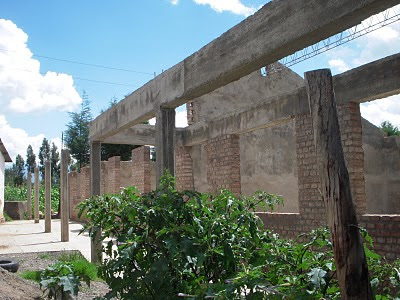


Children look on with amazement as Amizade volunteers and a neighbor help clear a site for a tank designed to catch rainwater to provide safe drinking water for a family. Some of you have written and asked penetrating questions about this project. Catching rainwater is being practiced in many places in underdeveloped countries. It is inexpensive, environmentally sound, and takes away the stress of transporting water from unreliable streams or from tapping groundwater. For a number of reasons the tanks are made of concrete rather than plastic and are put underground except for the top. First an underground tank is supported by the earth so it is more durable and doesn't require reinforcement bar. It is less likely to be stolen or damaged and the water has to be ladled out rather than tapped. Taps leak or get left open. Amizade has donated funds and labor for larger tanks for larger families as well, and received grant money for a huge tank for a grain storage facility and school. Other organizations, a friend wrote, such as Rotary, are actively involved in supporting similar projects throughout the world.
The middle picture shows a student from West Virginia University and some bald headed guy, referred to in Swahili as babu (grandfather), moving some dirt. The family this weekend completed the hole which is over six feet deep and are in the process of amassing rock and stone to help begin the next stage of mixing concrete. I hope to show the finished work in a future post.
In the meantime I think of all the good fortune we have at home and our tough daily decisions such as, "Should I wash the dishes by hand or use the dishwasher!"














































